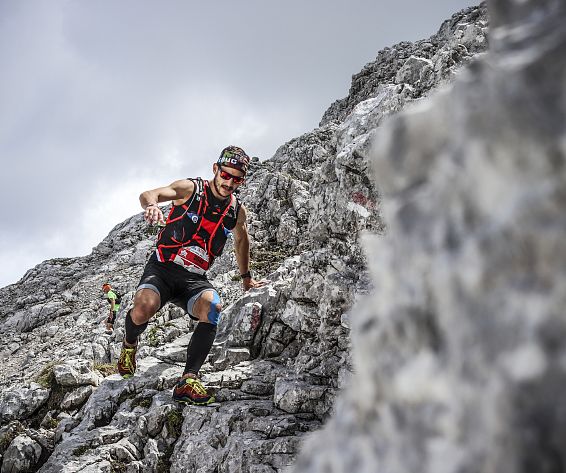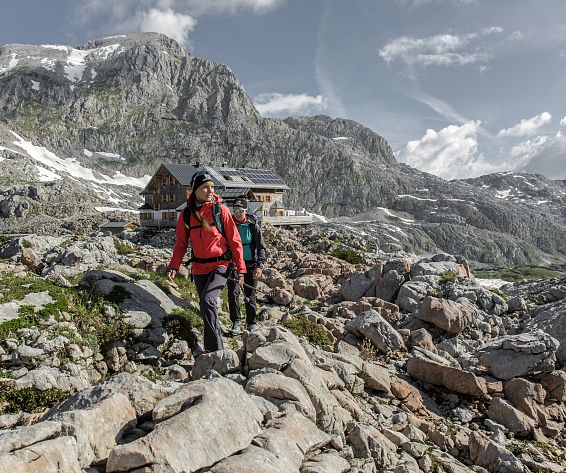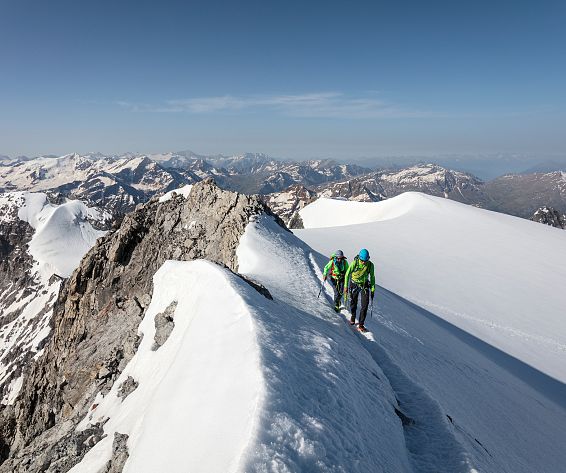High altitude training - what the mountain does to your body
Why exercise at alpine heights changes more than just the view
It often starts with the breath. It becomes shorter, faster, more demanding - even on the first ascent of 1,500 metres in altitude. Anyone who regularly exercises in the mountains quickly realises that different rules apply here. And this is exactly what makes training in alpine regions so special - and so effective. Because the thinner air, the changeable climate and the physical topography of the mountains influence the body in a fascinating way: physiologically, psychologically - and sometimes even philosophically.
Altitude training: What happens in the body?
From around 1,500 to 2,000 metres above sea level, the partial pressure of oxygen in the air we breathe begins to drop significantly. The result: the body receives less oxygen per breath - moderate hypoxia develops. To counteract this, the organism activates a series of adaptation mechanisms:
- Increase in respiratory rate (so-called hypoxic ventilation)
- Increase in heart rate and cardiac output
- Increased production of erythropoietin (EPO) - a hormone that stimulates the production of red blood cells
- Long-term improvement in oxygen uptake and utilisation
These reactions make training at altitude - in the right dosage - a highly effective stimulus for the cardiovascular system and the muscles.
Several studies (e.g. from the Journal of Applied Physiology) show this: Aerobic endurance performance can be increased by regularly spending time and training at moderate altitudes (1,800-2,500 metres). Mitochondrial biogenesis - i.e. the formation of new "power stations" in the muscle cells - is also favoured. The body learns to get by more efficiently with less oxygen.
Mental strength through mountain air
However, the effects of alpine exercise extend far beyond cell physiology. Numerous studies in the field of environmental psychology and sports psychiatry have proven this: Exercise in nature - especially in the mountains - can measurably reduce stress, improve cognitive functions and even alleviate depressive symptoms.
The alternation of physical exertion, focussed movement and far-sightedness leads to a state of heightened mindfulness. Many athletes describe this feeling as "clarity" or a "mental reset" - a state that is difficult to achieve in everyday life.
Forms of training with a height factor
Different forms of exercise are suitable for moderate heights, depending on your level of ability:
- Trail running & mountain running: Train coordination, running economy and endurance at high intensity.
- Mountain biking: Particularly effective uphill - large muscle groups are used, the metabolism is activated
- Alpine hiking (with poles if necessary): Ideal for basic training with a low heart rate. Can become an ideal basic endurance training programme, especially in combination with intervals.
- Outdoor functional workouts: Unstable ground, altitude stimulation and fresh air create a particularly intensive training stimulus.
Progression is important here: those who slowly acclimatise their body to the altitude will benefit more sustainably - and avoid overloading.
What's particularly exciting is that the effects often last for weeks, even when you return to the lowlands. Many competitive athletes specifically utilise this fact in training camps.
Where the feeling of height is particularly intense
Regions such as the Pinzgau, the Wilder Kaiser region, the Hohe Tauern, the Hochpustertal, the Zugspitz region or the South Tyrolean Eisacktal offer perfect conditions for active altitude training - with trails offering great views, varied altitude profiles and real contact with nature.
Pictures: Tourism organisations IDM Südtirol-Alto Adige, Hochkönig, Saalfelden-Leogang, Tiroler Zugspitz Arena, Wilder Kaiser
Between performance and regeneration
What makes training on the mountain really special is the combination of intensity and calm. While the body works against the incline and gravity, a mental lightness often begins inside. The mountains offer resistance - and space. Those who go up high often come back with more inner peace.
Five sports medicine tips for your training at altitude
- Slow acclimatisation: Start with easy units. The body needs 2-3 days to acclimatise to the altitude.
- Check your pulse: Your heart rate is higher at altitude. Stick to lower intensity zones than in the lowlands.
- Don't forget to hydrate: At high altitudes, the air you breathe is drier - drink at least 0.5 litres more per day.
- Intensify UV protection: UV radiation increases by around 10-15% per 1,000 metres of altitude. Sun cream and goggles are a must.
- Plan for regeneration: sleep, nutrition and active recovery (e.g. stretching, mobilising) are essential, as the body is under greater strain at altitude.





